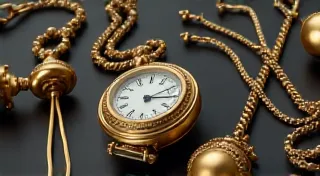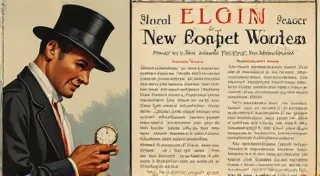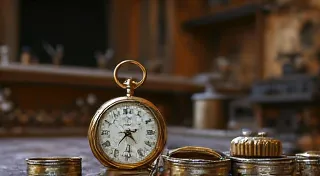How to Clean and Preserve Your Antique Pocket Watch
Antique pocket watches are not just time-telling devices; they are tangible pieces of history, intricate works of art, and often, valuable collectibles. Proper care and preservation are vital for ensuring these treasures last for generations. While professional servicing is always recommended for complex repairs, there are several steps you can take to keep your pocket watch in good condition between those expert visits. This guide offers practical tips for cleaning and preserving your antique pocket watch, allowing you to appreciate its beauty and value for years to come.
Understanding the Risks: Why Careful Cleaning is Essential
Before diving into cleaning, it's crucial to understand the potential risks. Antique pocket watches are delicate and often made with materials sensitive to harsh chemicals or abrasive methods. Improper cleaning can damage the movement, dial, case, or crystal. Avoid methods that might scratch, corrode, or degrade the original components. Remember, any irreversible damage can significantly decrease the watch's value.
External Cleaning: The Case and Crystal
The case of your pocket watch often bears the brunt of wear and tear. Here’s how to safely clean it:
- Gentle Dusting: Begin by using a soft, clean brush (like a sable brush or a dedicated watch cleaning brush) to remove loose dust and debris. Pay attention to crevices and engraved details.
- Mild Soap and Water: For stubborn grime, you can use a very mild solution of warm water and a few drops of dish soap. Dip the brush into the solution, gently scrub the case, and rinse thoroughly with clean water.
- Drying: Immediately dry the case with a soft, lint-free cloth. Avoid rubbing vigorously.
- Polishing (with Caution): If the case is gold or silver, you *may* consider polishing, but only if you are experienced and using appropriate products specifically designed for precious metals. Improper polishing can remove the patina and potentially damage the finish. When in doubt, leave polishing to a professional.
- Crystal Care: The crystal (the watch's "window") is often glass or acrylic. Glass crystals can be cleaned with a mild glass cleaner and a soft cloth. Acrylic crystals are more prone to scratching; clean them with a specialized acrylic cleaner.
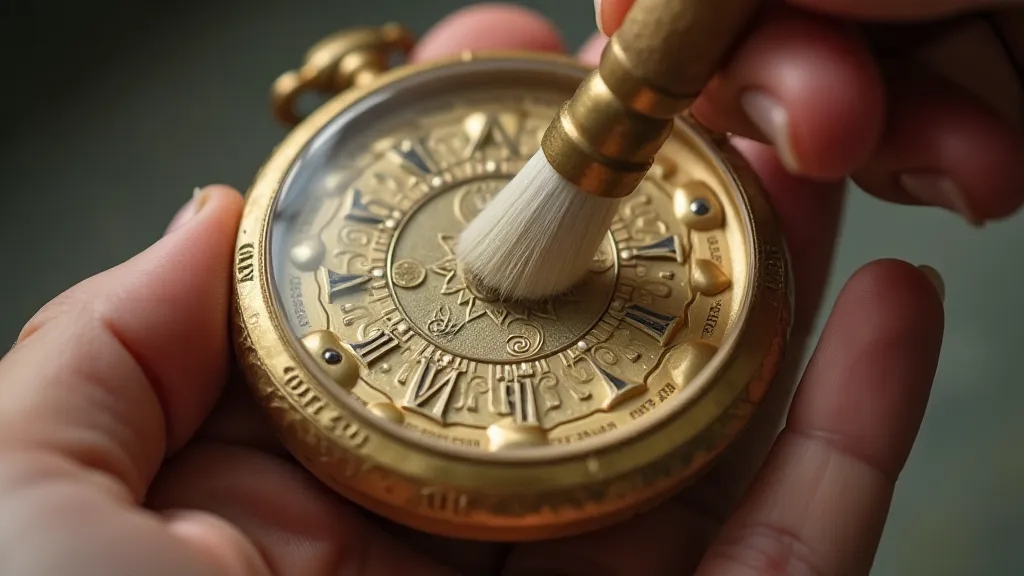
Internal Cleaning: A Word of Caution
Never attempt to disassemble or clean the internal mechanism of your antique pocket watch unless you are a trained watchmaker. The movement is incredibly complex, and even minor mistakes can cause irreparable damage. Internal cleaning requires specialized tools, knowledge, and experience. Leaving this to the professionals is the safest and wisest course of action.
Preservation Tips: Beyond Cleaning
Preservation involves more than just cleaning. Here are a few key steps to ensure long-term health:
- Storage: Store your pocket watch in a dry, stable environment, away from direct sunlight and extreme temperatures. A padded watch box or a soft pouch is ideal.
- Humidity Control: High humidity can lead to rust and corrosion. Consider using a dehumidifier in your storage area if necessary.
- Regular Servicing: Have your pocket watch professionally serviced every 5-10 years (or more frequently, depending on its condition and usage). A skilled watchmaker can clean, lubricate, and adjust the movement, ensuring its continued accuracy and longevity.
- Handling: Handle your pocket watch with care. Avoid dropping it or subjecting it to shocks.
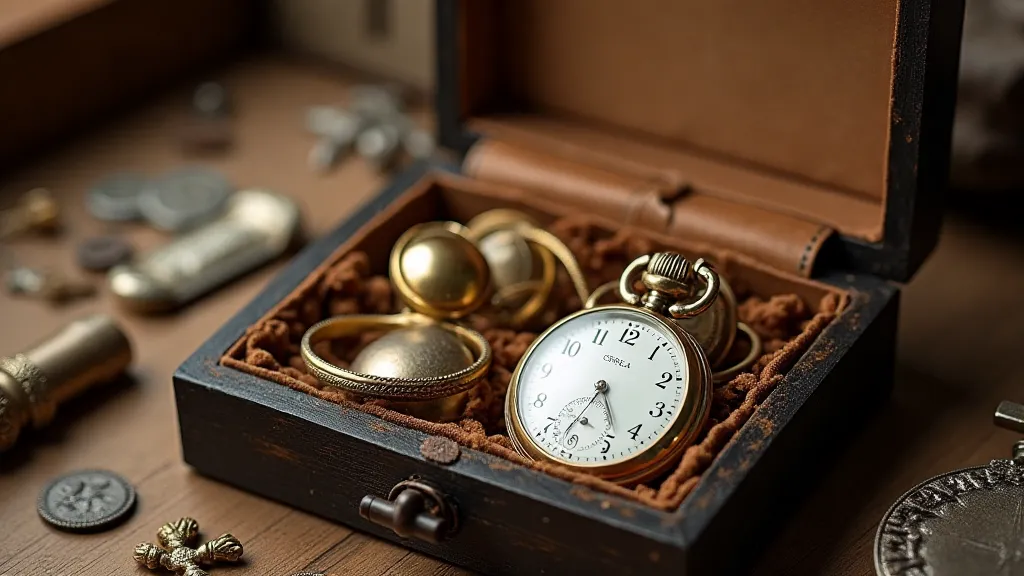
Dealing with Patina: A Matter of Taste
Many collectors appreciate the patina (the aging and discoloration) on antique pocket watches. This patina can tell a story about the watch’s history and character. While cleaning can remove surface grime, it's generally advisable to avoid aggressively stripping away the patina, as it can diminish the watch’s authenticity and collectibility. A gentle cleaning to remove surface dirt is acceptable, but leaving the natural aging process intact is often the best approach.
Recognizing When to Seek Professional Help
Certain signs indicate that your pocket watch needs professional attention. These include:
- Loss of Accuracy: The watch is consistently losing or gaining significant time.
- Visible Rust or Corrosion: Areas of rust or corrosion are apparent.
- Unusual Noises: The watch is making unusual noises.
- Sticking Hands: The hands of the watch are sticking or moving erratically.
In any of these cases, consult with a qualified watchmaker for diagnosis and repair.
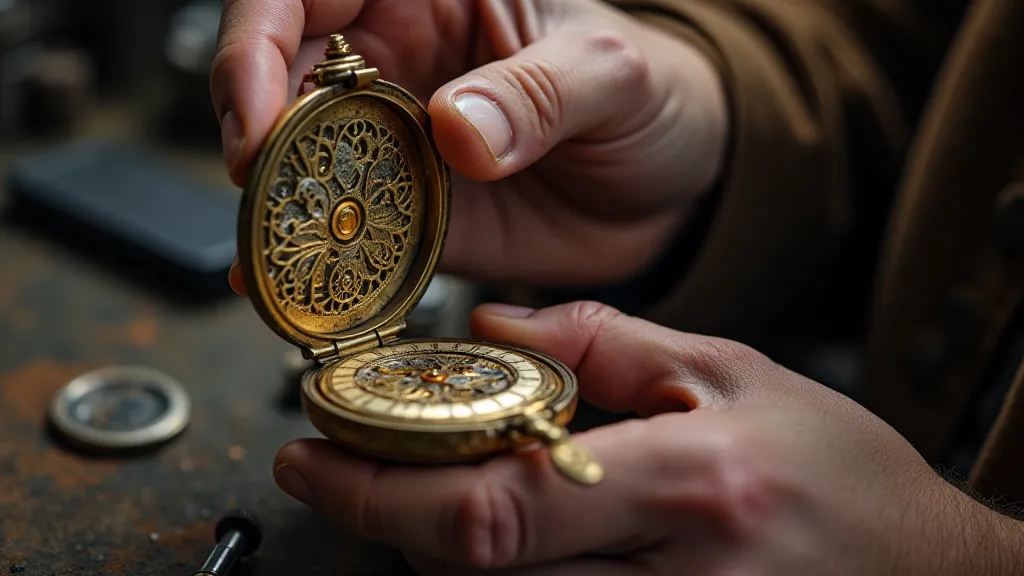
Conclusion
Caring for your antique pocket watch is a rewarding endeavor. By following these simple cleaning and preservation tips, and seeking professional help when needed, you can ensure that this treasured piece of history continues to tick for generations to come. Remember that patience and gentleness are key to preserving the beauty and value of your antique pocket watch.
